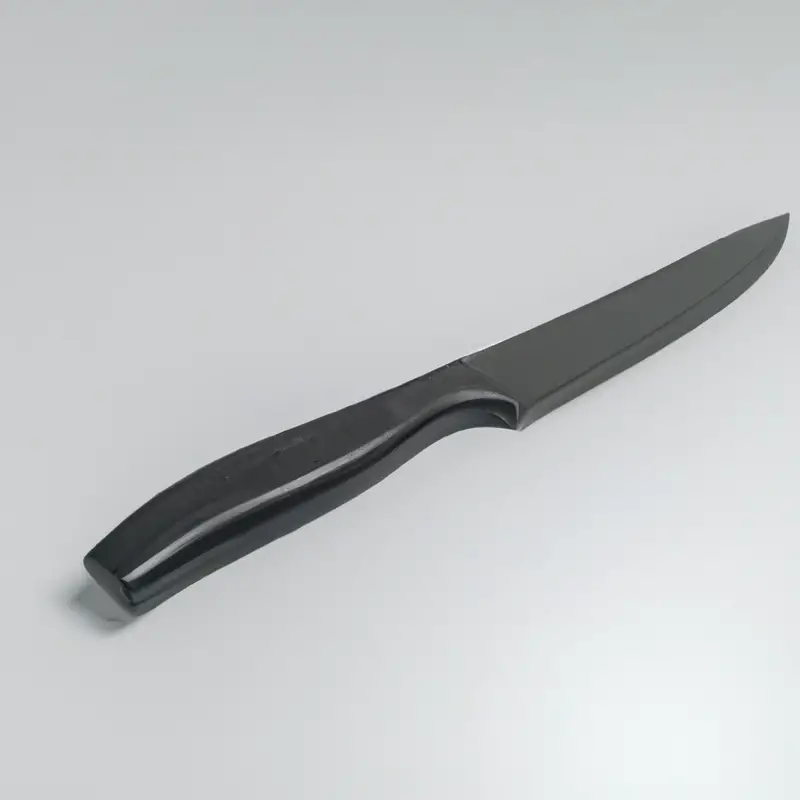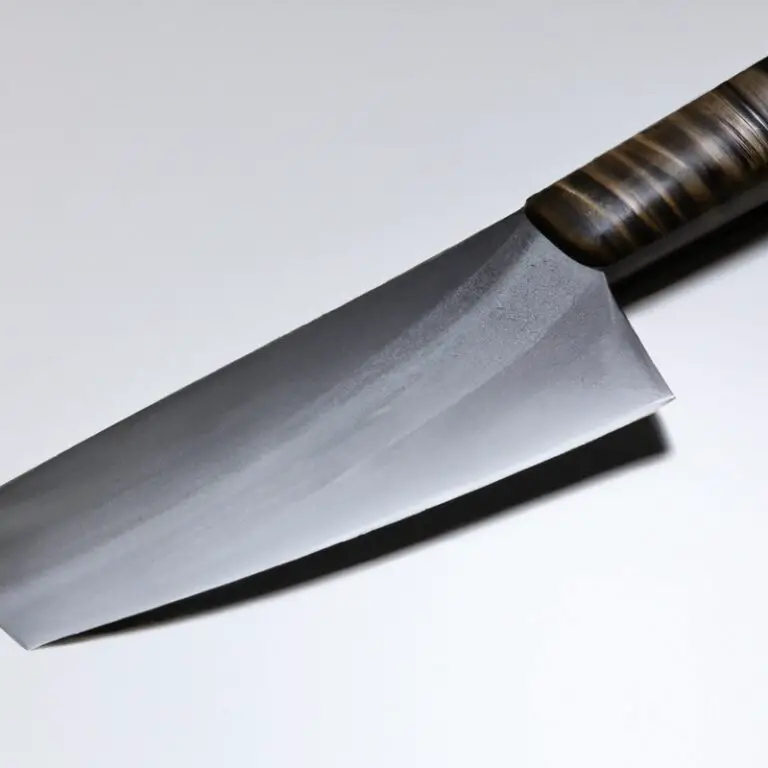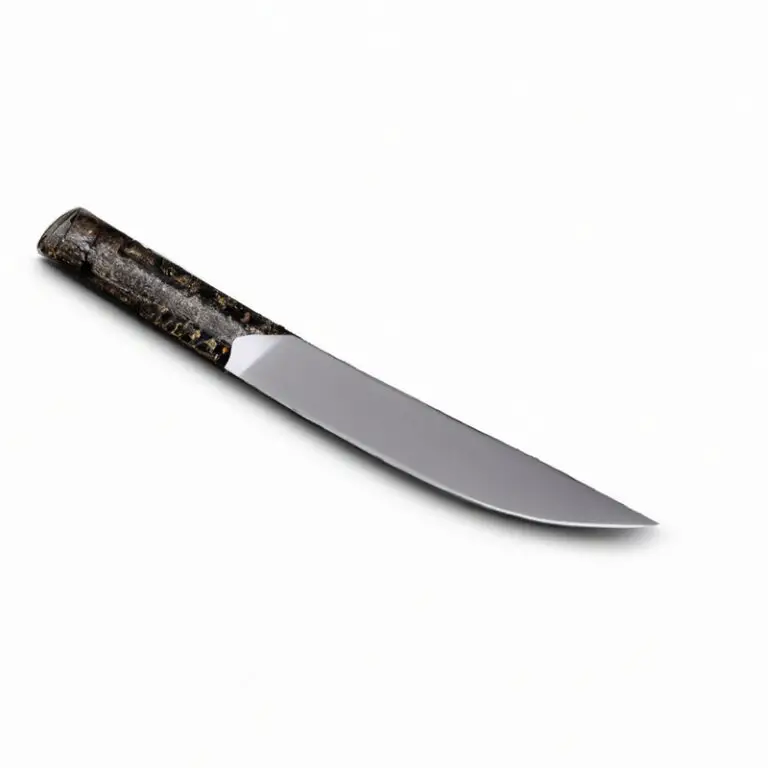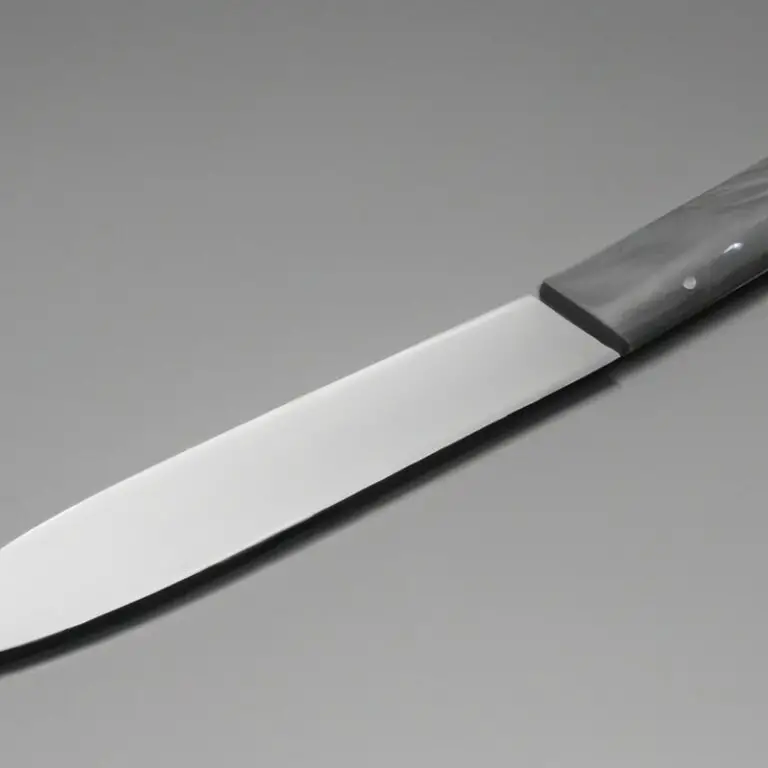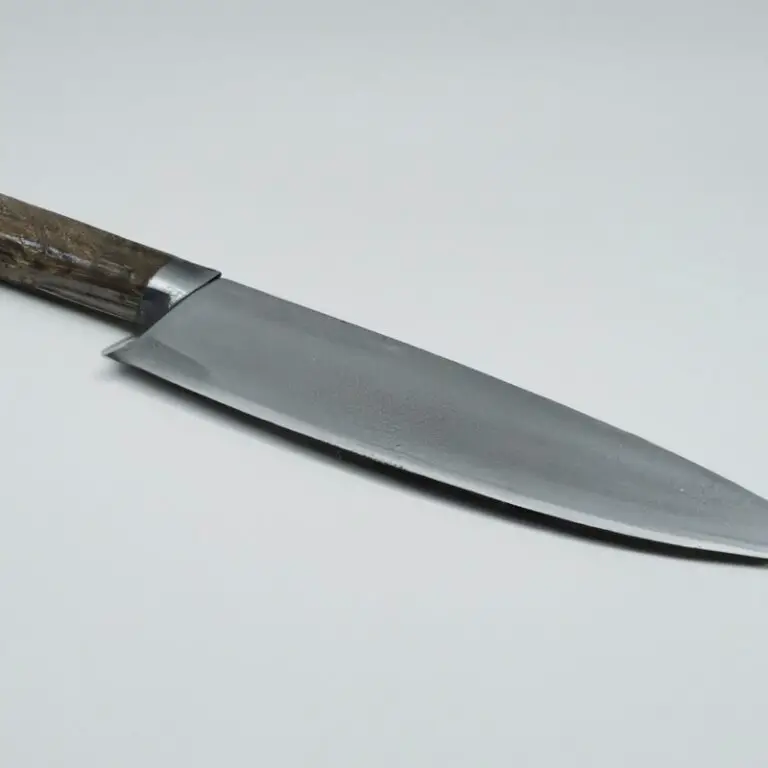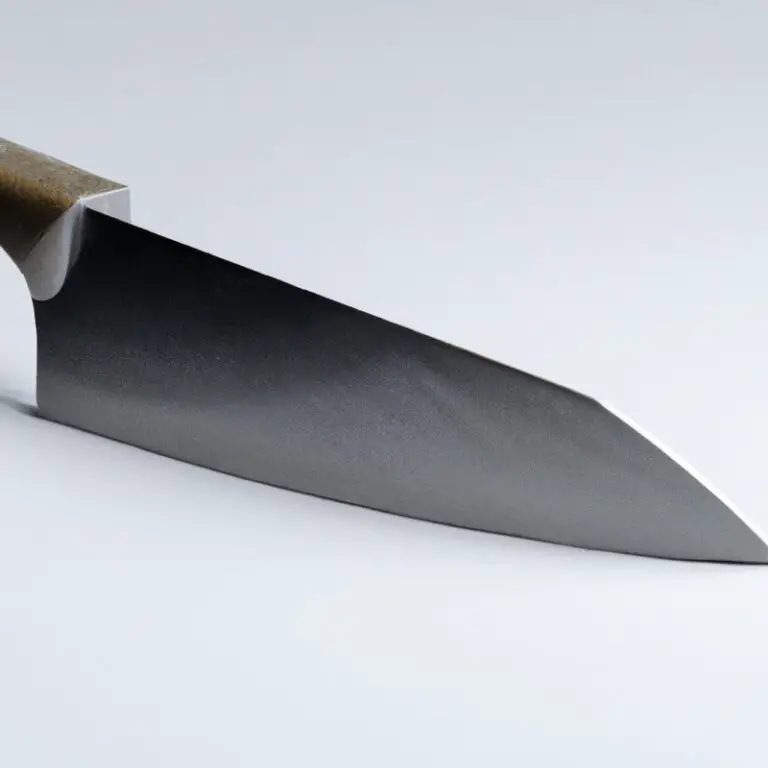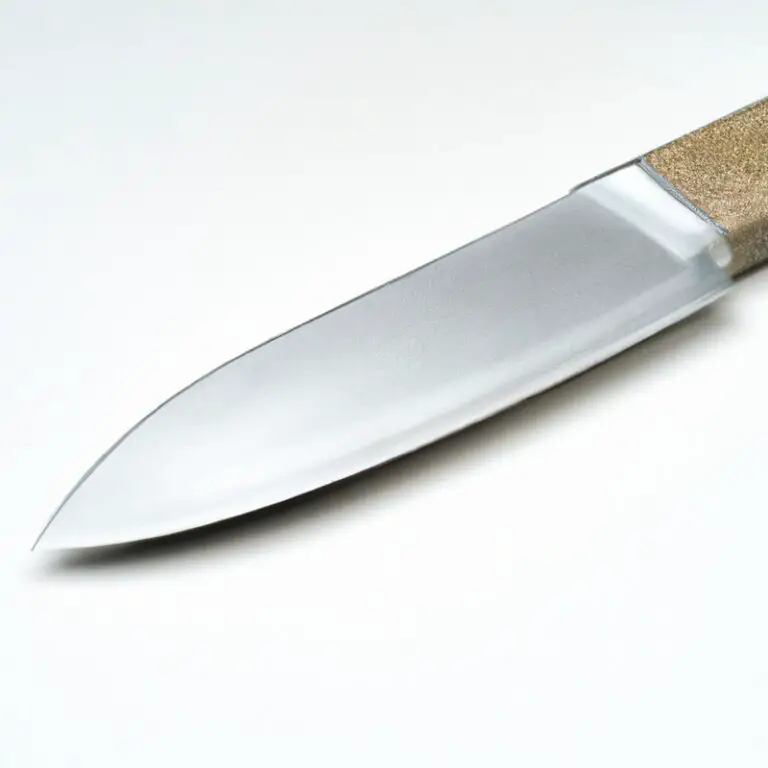How To Improve Knife Handling Speed With a Gyuto Knife? Slash Faster!
Key Takeaways:
- A Gyuto knife is a versatile option for chefs and home cooks looking to improve their knife handling speed. Its lightweight design and sharp, narrow blade make it ideal for precision cutting and quick chopping.
- To improve your handling speed with a Gyuto knife, focus on maintaining a firm grip and using the blade’s full range of motion. Practice regularly to build muscle memory and improve your cutting technique.
- Proper knife handling technique is crucial for safety as well as speed. Always keep your blade sharp and use a cutting board that won’t dull your knife. Use caution and respect when handling any blade.
- Remember that speed should never compromise accuracy or precision. While cutting quickly can be impressive, it’s more important to take the time to properly prepare your ingredients and ensure a quality finished product.
Are you tired of struggling with slow and inefficient knife handling? Look no further than the Gyuto knife.
But what exactly sets it apart from other knives?
In this article, I’ll break down the differences and provide expert tips on proper grip, posture, and cutting techniques to make the most of your Gyuto knife. We’ll also discuss sharpening and maintenance, choosing the right knife for you, and the benefits of using a Gyuto knife.
With practice and hand-eye coordination, you’ll be a speed-chopping pro in no time.
| Gyuto Knife Handling Tips |
|---|
| 1. Maintain a proper grip on the knife handle to maximize control and minimize wrist strain. |
| 2. Use the full length of the blade to make longer and more efficient cuts. |
| 3. Practice the proper slicing technique by rolling the blade back and forth while slicing through food. |
| 4. Keep your non-dominant hand out of the way to prevent accidents. |
| 5. Use a sharp and well-maintained knife to reduce the effort required for cutting. |
What is a Gyuto knife and how is it different from other knives?
A Gyuto knife is a traditional Japanese chef’s knife used for slicing, chopping, and dicing. It has a thinner and lighter blade compared to other Western-style knives, allowing for greater precision and control.
The blade length ranges from 7 to 12 inches, and the sharp edge is angled at a 15-degree bevel, making it sharper and easier to sharpen than European blades.
Gyuto knives are versatile and can handle various tasks, from delicate slicing of raw fish to heavy-duty chopping of vegetables and meats. Overall, a Gyuto knife is an essential tool for any chef or home cook who values efficiency, precision, and performance.
The importance of proper grip and posture when using a Gyuto knife
Proper grip and posture are essential when using a Gyuto knife. Holding the knife correctly gives you greater control over it and reduces the chances of accidents.
Gripping the knife handle firmly but not too tightly with your dominant hand and placing the other hand on top of the blade helps maintain balance and control.
Your posture should be upright with your shoulders relaxed to avoid unnecessary strain. Keeping your elbow close to your body and using your wrist and arm to guide the knife improves precision and reduces fatigue.
Poor grip and posture can result in decreased efficiency and safety hazards when using a Gyuto knife.
Therefore, it is crucial to practice the right technique to maximize your knife handling speed.
The best techniques for chopping and slicing quickly and efficiently
To chop and slice quickly and efficiently with a Gyuto knife, it’s vital to use the right techniques. Here are some tips to help you:
- Use a pinch grip: Grip the knife handle with your three fingers and thumb, while resting the index finger on the blade’s spine.
- Practice proper posture: Stand straight with feet shoulder-width apart and position the cutting board at waist level to avoid straining your back.
- Utilize the rocking motion: Place the tip of the blade on the board, then lift and pivot the knife back and forth to chop in a fluid motion.
- Master the slicing technique: Place the blade against the food at a 45-degree angle and slice through it using a smooth motion.
- Keep the blade sharp for optimal performance: Dull knives require more force, making it difficult to chop quickly and efficiently.
By utilizing these techniques, you will improve your speed and efficiency while keeping your fingers safe from accidents.
Sharpening and maintenance tips to ensure optimal performance
Sharpening and maintaining your Gyuto knife is crucial for its optimal performance. Here are some tips to help you take care of your knife:
- Use a honing rod regularly to keep the edge straight and sharpen the blade, making it more efficient.
- Avoid using glass, metal or ceramic cutting boards, as they can cause premature dullness. Instead, use a wooden or plastic cutting board.
- Clean and dry your knife every time after use, and never leave it soaking in water.
- Sharpen your knife with high-quality stones only, preferably in a sharpening angle of around 15-20°.
- If you notice any chips or imperfections on your knife, take it to a professional for repair or replace it.
By following these tips, your Gyuto knife will stay sharp and perform at its best, making it a valuable asset in improving your knife handling speed.
How to choose the right Gyuto knife for your needs and preferences
Choosing the right Gyuto knife can make a huge difference in your knife handling speed and overall satisfaction in the kitchen. Consider the following factors when selecting the perfect Gyuto for your needs:
- Blade Length: typically ranges from 7 to 12 inches. Choose a length that feels comfortable and allows you to handle your tasks efficiently.
- Blade Material: Consider high-carbon stainless steel for durability, sharpness, and ease of maintenance.
- Blade Shape: Flat, concave, or convex blade shapes are available. Choose one that suits your cutting style and preferences.
- Handle Material: Look for a handle that is comfortable and provides a secure grip, such as wood, stainless steel, or composite materials.
- Weight: An ideal Gyuto knife should feel balanced in your hand and not too heavy or light.
- Price: Set a budget and compare features of different Gyuto knives to find one that suits your needs and budget.
By considering these factors, you can find a Gyuto knife that is perfect for your needs, helping you improve your knife handling speed and taking your cooking skills to the next level.
The benefits of using a Gyuto knife for improving knife handling speed
Using a Gyuto knife for improving knife handling speed comes with a range of benefits. The blade’s shape and design allow for precision cuts and smooth slicing, making it an ideal tool for those who want to speed up their food prep time.
The knife’s sharpness also minimizes the need for multiple passes, reducing the time spent chopping fruits, vegetables, meats, and herbs.
A Gyuto knife’s lightweight, balanced design gives excellent control and allows for the quick and effortless movement of the blade, promoting a faster chopping and slicing pace. With this knife in hand, you can enhance your proficiency and knife handling speed, making your culinary experience more enjoyable and efficient.
Importance of choosing the right cutting board to complement your Gyuto knife
Choosing the right cutting board is crucial to complement your Gyuto knife. The type of cutting board you use affects the sharpness and durability of the blade.
Using a hard surface like a glass or ceramic board can damage the knife’s edge, making it difficult to sharpen.
On the other hand, softer surfaces like wood or plastic boards are less harsh on the blade and help maintain its sharpness for longer. Wooden cutting boards are a popular choice as they are gentle on the knife and naturally antimicrobial.
However, they require more maintenance than plastic boards, such as oiling regularly to prevent cracks and splitting.
Plastic boards are easier to clean and dishwasher safe, but they tend to be harder on knives than wooden boards. Moreover, it is also crucial to choose the right size of the cutting board that complements your Gyuto knife.
It should be large enough to allow sufficient space for the knife’s movement and prevent injury.
A board that is too small can be hazardous as it can slide around during use and impair your speed and efficiency. To complement your Gyuto knife and improve your knife handling speed, choose a cutting board that is gentle on the edge and of the right size.
Credible cutting boards and proper maintenance can increase your Gyuto knife’s longevity while providing a safer and effortless food preparation experience.
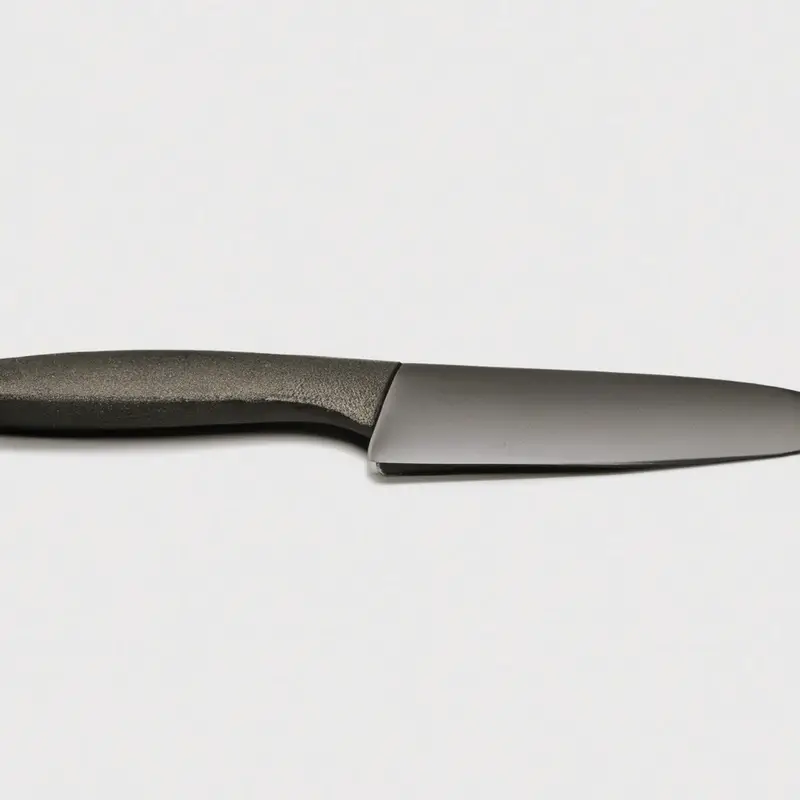
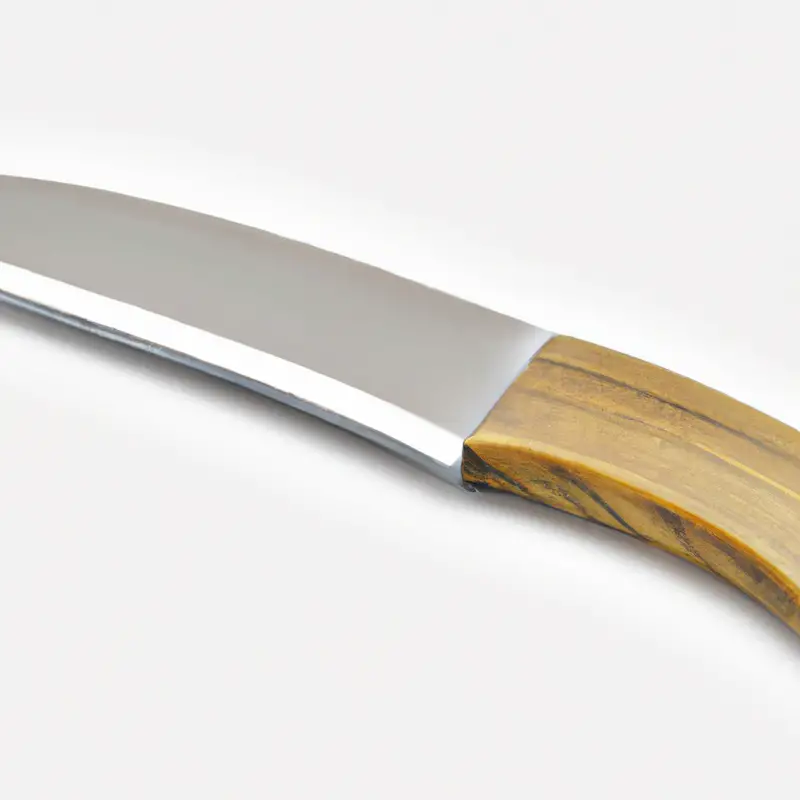
How to hold and angle the Gyuto knife while cutting
To hold and angle a Gyuto knife while cutting, grip the handle firmly with your dominant hand and hold the blade with a pinch grip using your index finger and thumb. Maintain a consistent grip pressure throughout the cut, letting the weight of the knife do the work.
For more control, use a claw grip with your other hand to hold the food in place.
When slicing, keep the blade at a 15-20 degree angle and use a rocking motion or push-pull motion to cut through the food. For chopping, hold the knife at a 90 degree angle and use a downwards motion while keeping your other hand clear of the blade.
Remember to keep your wrist straight to prevent injury and aim for smooth, even cuts with each stroke.
Tips for reducing food prep time with a Gyuto knife
Tips for reducing food prep time with a Gyuto knife:
- Use a rocking motion when chopping and slicing to minimize the number of cuts required.
- Keep the blade sharp to reduce the amount of force needed to cut through food.
- Cut ingredients into small, uniform pieces to save time while cooking.
- Choose the right cutting board, preferably made of wood or rubber, to prevent the knife from dulling quickly.
- Avoid using excessive force or pressure when cutting through harder ingredients like potatoes or carrots, as this can slow you down and strain your wrist.
- Practice your knife skills regularly to build muscle memory and improve your dexterity.
- Use the right grip and posture to maximize your control and minimize effort while reducing food prep time.
By implementing these tips, you’ll be able to reduce your food prep time while also improving your overall knife handling speed with a Gyuto knife.
The importance of hand-eye coordination and practice in developing knife handling speed
Hand-eye coordination and practice are critical factors in developing knife handling speed. They enable you to operate your Gyuto knife efficiently while ensuring your safety.
When you are using a Gyuto knife, you need to keep your eyes fixed on your hands to ensure that you are chopping or slicing correctly.
Your hand movements should be precise, steady, and stable to avoid injury or accidents. Regular practice can help you develop muscle memory and improve your knife handling speed.
Start with simple tasks and slowly move to more complicated ones to build your dexterity.
Incorporate different slicing and chopping techniques while practicing to enhance your overall knife skills. Consistent effort will help you become more efficient, speedier and safer with your Gyuto knife.
In summary, practicing hand-eye coordination is fundamental to knife handling speed and mastering the use of your Gyuto knife.
Regular practice can help you develop muscle memory, improve your knife skills, and help you become more confident and efficient in the kitchen.
Final Verdict
Mastering knife handling speed with a Gyuto knife requires proper grip, posture, technique, and maintenance. The right cutting board can also complement your knife for optimal performance.
With practice and hand-eye coordination, you can minimize food prep time and increase efficiency in the kitchen.
Remember to choose the right Gyuto knife for your specific needs and preferences. By implementing these tips and techniques, you can elevate your knife skills and achieve excellent results.
Trust in these reliable and actionable insights to enhance your cooking experience with a Gyuto knife.

